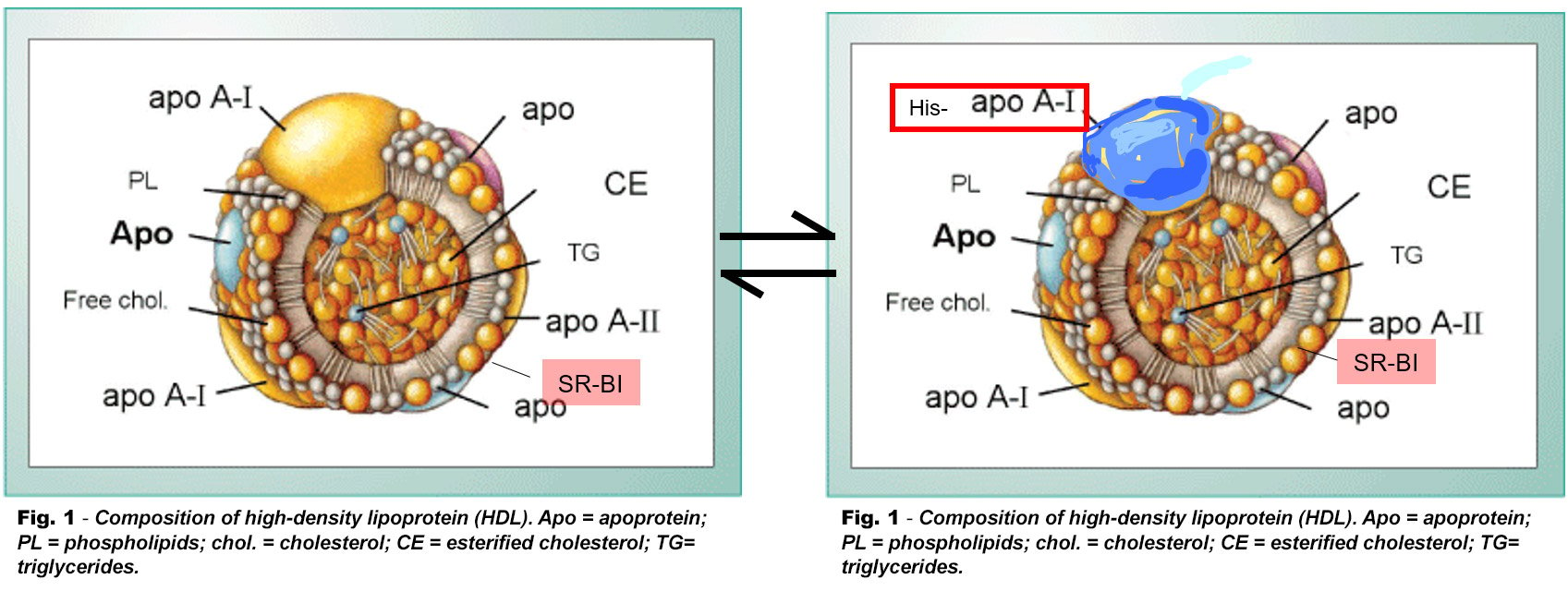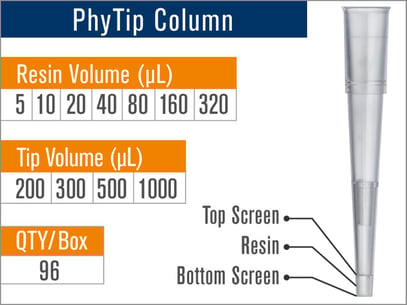In unconventional assays, it may be difficult to find an effective purification method to separate your biomolecule from your complex sample. With factors such as specificity, selectivity, stability, and scalability, finding an innovative solution is needed to help you solve this complex problem. Biotage PhyTip® columns are an attractive alternative to traditional purification formats and procedures. PhyTip columns are an innovative way to purify your sample using immobilized resin in a tip column in an automated fashion. The usage of PhyTip columns for purification allows for greater control of your purification process than many commonly used purification methods. The usage of an automated column could be just the solution that you need to solve your complex sample purification bottlenecks.
Assay optimization
One of the major advantages of using PhyTip columns is the ability to optimize and improve existing methods that are commonly used. With the ability to automate on-column purification in conjunction with dual-flow chromatography, PhyTip columns can increase the efficacy of many assays. One example is the usage of PhyTips to improve the effectiveness of telomerase assays. Telomerase assays require optimization to ensure accurate and reproducible results. TRAP (Telomeric Repeat Amplification Protocol) is a widely used technique for measuring telomerase activity. Although the assay is commonly used, it can have issues with variability and reproducibility. These issues can be remedied by immobilizing the enzyme in an automated fashion. PhyTip columns can be used to increase equilibrium binding to help better immobilize your telomerase enzyme.
With the enzyme conjugated to the PhyTip column, the addition of DNA templates and DNTPs can be automated to be cycled back and forth at 37°C. This additional change from the traditional crude manual method has shown a significant improvement in the telomerase assay sensitivity and robustness. This is due in part to PhyTip columns' use of automation and removing human error. The usage of a controlled automation enables changes in flow rate as well as direction. This change allows for greater gentle protein activity. This is just one of many examples of how the usage of an automated pull-down can improve existing assays.
Assay innovation
PhyTip columns can also be used to improve the efficacy of existing assays but can also be used to innovate current applications. One example of this is the additional use of PhyTip columns for high-density lipoprotein (HDL) pull-down assay. Affinity pull-downs are a commonly used method to capture and purify HDL from samples. Due to the complexity of the samples, this assay has many limiting factors that can affect the accuracy and reliability of the assay.
In the HDL construct, apo A-1 protein freely dissociates and re-associates with the HDL construct. An effective mechanism of purification is adding in an excess of recombinant apo A-1 with a His-tag and allowing the apo A-1 protein to freely re-associate with the HDL construction. The PhyTip column can also be packed with immobilized Trypsin for an on-column digest and be followed by a cleanup using a C18 desalting column. In one automated workflow, you can separate, digest, and clean up your target with no manual intervention. PhyTip columns' utilization of packed resin bed increases the selectivity for the biotinylated A-1 protein to your resin.
This is just one of the potential innovative approaches you can employ to your existing purification methods using the PhyTip columns.

Source: Instituto do Coração do Hospital dasClínicas – FMUSP, São Paulo, SP, Brazil
To learn more, click on View Webinar.



